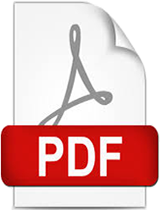
Report
Côte d’Ivoire’s Infrastructure : A Continental Perspective
Attachments [ 0 ]
More Details
This study is a product of the Africa Infrastructure Country Diagnostic (AICD), a project designed to expand the world's knowledge of physical infrastructure in Africa. Infrastructure contributed 1.8 percentage points to Cote d'Ivoire's annual per capita Gross Domestic Product (GDP) growth in the mid-2000. Raising the country's infrastructure endowment to that of the region's middle-income countries could boost annual growth by a further two percentage points per capita. Cote d'Ivoire made major strides with respect to infrastructure during the 1990s. As a result, the country has broad-reaching national backbones in the road, energy, and Information and Communication Technologies (ICT) sectors, and relatively high levels of household coverage for utility services. However, much ground was lost to conflict in the mid-2000s. Very little investment has taken place in the last fifteen years, leading to recent power shortages, the deterioration of the road network, and the deceleration of progress on safe water access. Cote d'Ivoire's most pressing challenge will be to regain the financial equilibrium needed to restore a reliable energy supply. Reestablishing the prominence of Abidjan's port will require investments in terminal capacity, as well as road and rail infrastructure upgrades on hinterland linkages. The underfunding of road maintenance must also be addressed. Another challenge lies in sanitation, as it is currently unlikely that the country will meet the associated millennium development goal. This report presents the key AICD findings for Cote d'Ivoire, allowing the country's infrastructure situation to be benchmarked against that of its African peers. A social and economic crisis in Cote d'Ivoire has crippled its growth trajectory, which had been that of a middle-income country. It will therefore be compared to low-income countries (fragile and non-fragile groups) and middle-income countries, as well as immediate regional neighbors in West Africa. The study presented several methodological issues.
Comments
(Leave your comments here about this item.)